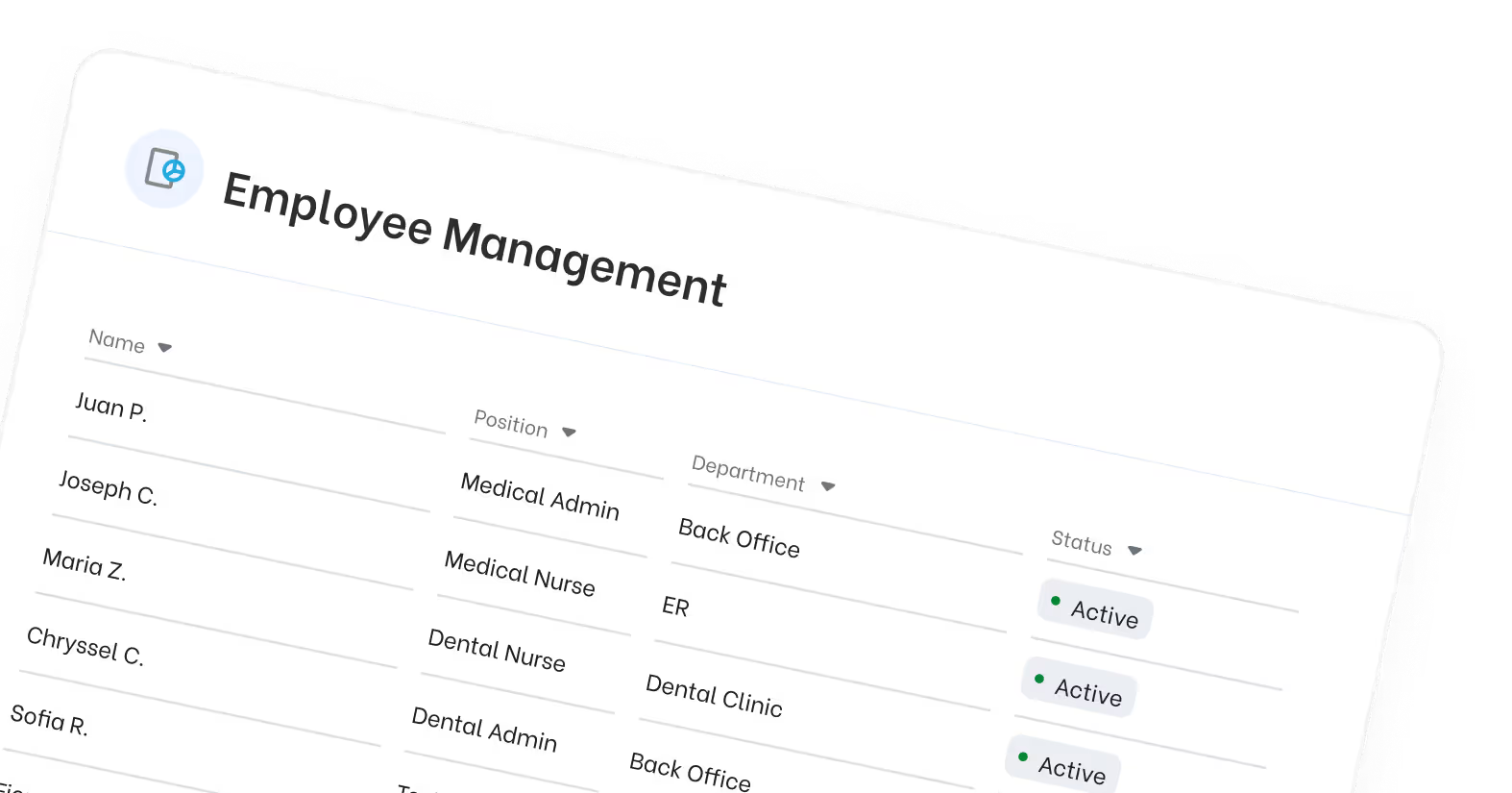Scaling Smart: Why Virtual Support Makes Sense for Growing Clinics

Growing clinics face constant pressure to increase capacity without sacrificing care quality. Traditional growth models often lead to overextended staff, longer wait times, and inconsistent service.
Healthcare leaders are increasingly driving the adoption of virtual support as a smarter path forward, scaling clinic operations efficiently while preserving the patient experience.
This article outlines why virtual health makes sense for expanding clinics, how core technologies enable growth, and what challenges to anticipate and overcome.
One major challenge is the administrative burden that growing clinics face, including managing patient data, billing, and scheduling. Virtual support can help reduce this administrative burden, streamlining operations and allowing providers to focus more on patient care.
Significant progress is being made in the adoption of virtual support, leading to measurable improvements in clinic growth and operational efficiency. The COVID-19 pandemic exposed critical limitations in healthcare systems and accelerated the adoption of virtual health solutions, serving as a catalyst for innovation in clinic operations.
Key Takeaways
- Virtual care enhances clinic growth by improving efficiency, care delivery, and reach.
- Technologies like AI, telemedicine platforms, and remote monitoring tools support scalable operations.
- Successful implementation depends on secure data practices, system integration, and staff training.
The Role of Virtual Health in Clinic Growth
Virtual health isn’t just about convenience, it’s an essential growth strategy for clinics looking to expand without adding strain. As a key component of the broader digital health ecosystem, virtual health works alongside remote monitoring and AI-powered health solutions to transform healthcare delivery and improve outcomes. It enables:
- Better patient care through personalized, round-the-clock support
- More efficient operations through remote administrative and clinical roles
- Wider service reach by removing geographic limitations
Remote nurses, virtual assistants, and AI-supported platforms reduce documentation time, improve engagement, and enable proactive care. These virtual support systems also enhance health communication between patients and providers by using tailored messaging and digital tools, leading to better understanding and adherence. For clinics, this means scalable growth without burnout or service gaps.
Enhancing Patient Care
Virtual support allows nurses and providers to focus more on patients and less on paperwork. Results include:
- Stronger patient-provider interactions during consultations
- Better monitoring through tools like Caregility Cloud™
- Improved early intervention using real-time alerts and AI analysis
Virtual support platforms can also improve access to mental health and mental health care, enabling early detection and ongoing support for patients with psychiatric disorders.
Tele-critical care, virtual nursing, and remote monitors contribute to safer, more proactive care across the patient journey.
Virtual support tools also assist in managing chronic diseases and improving medication adherence, leading to better long-term outcomes. By reducing administrative friction, clinics enhance both outcomes and provider satisfaction.
Improving Efficiency and Reducing Costs
Virtual care models reduce reliance on in-person visits and manual processes. Clinics save time and money by:
- Automating routine tasks such as scheduling, documentation, and billing workflows
- Using AI to predict patient flow, optimize hospital operations, and manage medical appointments more efficiently
- Centralizing care coordination across departments
AI-driven scheduling systems can also incorporate patient preferences, further improving efficiency and patient satisfaction.
These improvements lead to faster throughput, fewer errors, and better use of limited staff resources—especially critical as patient volume grows.
Expanding Access and Service Reach
Virtual health opens new doors for clinics serving rural, underserved, or mobility-challenged populations. Through telehealth visits and remote monitoring, clinics can:
- Extend care to hard-to-reach patients
- Increase continuity of care across locations
- Reduce travel requirements and no-show rates
By leveraging virtual care initiatives, clinics can promote health equity by expanding access to health services for underserved populations.
This approach ensures fair and equitable health outcomes across diverse communities.
This expansion supports both community impact and business growth, boosting volume without building out physical infrastructure.
Key Technologies Enabling Virtual Support
A successful virtual strategy depends on the right tech stack. Digital innovation, technological developments, and digital transformation are accelerating the adoption of virtual support across healthcare.
These advancements are transforming health care delivery by enabling virtual, home-based, and population health management approaches outside traditional clinical environments.
These tools are driving smarter care delivery and scalable growth:
- AI technologies, artificial intelligence, and both AI system and AI systems are now core components, powering advanced analytics, automation, and personalized care.
- Integration of mobile devices, mobile health solutions, and regulated medical device platforms enables scalable, real-time virtual support and remote monitoring.
Telemedicine Platforms
Platforms like Caregility provide secure, EHR-integrated environments for video visits, consults, and continuous care. Telemedicine platforms support virtual visit workflows, enabling healthcare providers to deliver care remotely and expand services into outpatient settings. Key features include:
- One-to-one and group care sessions
- Custom workflows to meet resource gaps
- Integration with patient records, including electronic health records (EHRs), for seamless documentation
AI-Powered Tools
AI supports faster, smarter decisions. Benefits include:
- Clinical decision support and predictive analytics, with natural language processing enhancing data extraction from unstructured sources and supporting clinical decision making
- Faster diagnoses via medical imaging analysis
- Workflow automation for administrative load reduction
AI also helps identify patients needing intervention earlier, improving outcomes and reducing emergency escalations. AI tools enable precision medicine by delivering targeted treatments based on individual patient data, and support population health strategies through integrated data analytics for better patient outcomes.
The efficacy and safety of AI-powered healthcare solutions are increasingly being validated through clinical trials, including randomized controlled trials and real-world evidence studies.
Wearables and Remote Monitoring
Wearables enable continuous patient monitoring and remote patient monitoring by collecting real-time data on vitals, enabling:
- Continuous observation of chronic or high-risk patients
- Early detection of complications
- Collection and analysis of health data in real time
- Fewer in-person checkups
Remote monitoring tools also help clinics triage patients by using real-time health data to prioritize care and identify those needing immediate intervention.
Together, these tools reduce provider workload and keep patients engaged in their care between visits.
Benefits of Virtual Support for Clinics
Virtual support isn’t just about convenience, it delivers measurable outcomes that directly support growth.
1. Stronger Patient Engagement
Virtual platforms increase adherence through:
- Automated reminders and follow-up scheduling
- Easy access to support and secure messaging
- On-demand appointment booking
These platforms can also support weight management by offering personalized coaching and digital interventions tailored to individual needs.
Patients are more involved, which translates into better compliance, satisfaction, and outcomes.
2. Greater Access to Care
Virtual solutions make care accessible to more patients, regardless of location. These technologies contribute to public health by improving access to human services and supporting patients with substance use disorders, ensuring broader and more equitable care for diverse populations.
Clinics can connect patients to providers, specialists, and resources remotely, removing geographic barriers that once limited growth.
3. Smarter Data Management
AI tools and integrated systems help clinics manage patient data efficiently:
- EHR sync for real-time updates
- Pattern detection to inform care plans
- Compliance support through secure data sharing
Prior research has shown that health care organizations leveraging data-driven approaches can significantly improve clinical outcomes.
This not only improves care but also helps meet regulatory and reporting requirements as the clinic scales.
Overcoming Implementation Challenges
Scaling with virtual care isn’t without its hurdles. A key challenge in virtual support implementation is improving medication adherence, which is influenced by multiple factors and requires innovative solutions.
Clinics must address:
- Technology integration and staff training
- Patient engagement and digital literacy
- Data privacy and security
- Workflow redesign and change management
Evolving business models, such as Healthcare-as-a-Service (HaaS), and the active involvement of health care professionals in care coordination and AI integration are critical to successful virtual support adoption.
Healthcare systems are adapting to these changes by integrating digital innovations and building more resilient care delivery frameworks to enhance efficiency and patient outcomes.
Data Privacy and Security
- Ensure HIPAA compliance
- Stay updated on evolving state and federal privacy laws
- Conduct risk assessments for all platforms and AI tools
System Integration
- Choose virtual platforms that work with existing EHRs
- Avoid creating parallel systems that slow down workflows
- Start with small pilots before scaling full clinic adoption
Training and Change Management
- Train staff on software and workflows
- Reinforce how virtual tools improve, not replace, patient care
- Provide ongoing support as systems evolve
Case Studies: Virtual Support in Action
Small Clinic Expansion
A local clinic integrated virtual nursing and teleconsultation tools, reducing documentation time and expanding into two rural markets without adding on-site staff.
This approach reflects broader trends in the healthcare system, where virtual support and digital solutions are transforming the healthcare landscape by enabling more efficient, accessible, and scalable care delivery. Patient satisfaction and clinical outcomes both improved.
Health System Innovation
A larger health network, including healthcare providers, health systems, and health care organizations as key participants in this innovation, deployed remote care platforms across departments. Results included shorter appointment wait times, faster specialist access, and a 40% improvement in administrative turnaround.
What’s Ahead: Future Trends in Virtual Health
Virtual care is evolving from an add-on service to the foundation of modern healthcare. As the industry shifts toward value-based care, virtual support, AI-driven solutions, and digital tools transform the health care ecosystem and healthcare delivery.
Health care providers are increasingly responsible for capturing patient data, complying with privacy regulations, and integrating health monitoring technologies into future care models. Emerging trends include:
AI-Driven Personalization
- Genetic markers and lifestyle data inform tailored treatment plans, enhancing medical care through AI-driven personalization
- Predictive analytics reduce readmissions and emergency visits
Data Interoperability
- More connected systems mean faster decisions and cleaner handoffs
- Centralized data improves visibility across care teams and settings
Shift to Preventive, Remote-First Models
By 2040, a significant portion of outpatient care is expected to shift to virtual-first delivery, with future models emphasizing proactive health management through digital and remote services, supported by AI, home diagnostics, and personalized care platforms.

Take the Next Step with Virtual Support
Virtual support is no longer optional for growing clinics, it’s essential. It improves how clinics serve patients, manage data, and allocate resources.
With the right technology, training, and strategy, clinics can scale without burnout or breakdown.
MedVirtual offers the staffing, tools, and experience to help your clinic grow smarter, not harder.
Frequently Asked Questions
What are the top benefits of virtual support for growing clinics?
Increased efficiency, reduced costs, broader patient reach, and higher care quality.
How do telemedicine platforms support scalability?
They enable remote consults, reduce wait times, and streamline scheduling without adding staff.
What challenges should I expect when implementing virtual support?
Data privacy, system integration, and staff training. Addressing these early is key to success.
What technologies power virtual care models?
Telemedicine platforms, AI tools, wearable health devices, and EHR-integrated systems.
Where is virtual health headed in the future?
Toward AI-powered personalization, system-wide data integration, and preventive, home-based care delivery.






